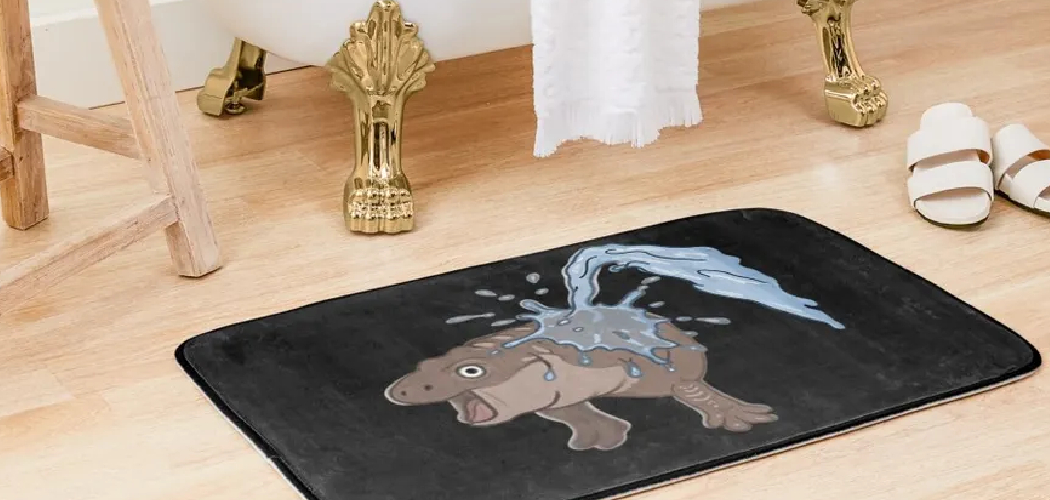Bath mats are essential bathroom accessories, providing comfort and preventing slips, but they can also harbor dirt, bacteria, and mold if not cleaned regularly. Disinfecting your bath mats is crucial for maintaining hygiene and ensuring a fresh, clean environment in your bathroom. With the right approach, you can keep your bath mats spotless and extend their lifespan. This guide will walk you through the steps of how to disinfect bath mats.
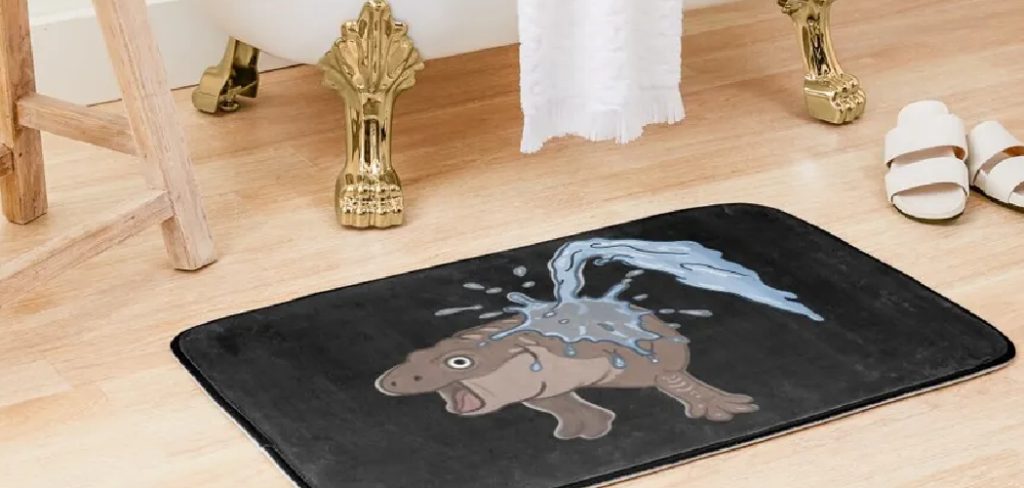
Why Disinfecting Bath Mats Is Important
Bath mats are in constant contact with moisture, which creates an ideal environment for bacteria, mold, and mildew to grow. Over time, these microorganisms can not only cause unpleasant odors but also pose health risks, particularly for individuals with allergies or respiratory issues.
Additionally, dirty bath mats can become stained or discolored, diminishing the overall appearance of your bathroom. Regularly disinfecting your bath mats ensures that they remain sanitary, safe, and visually appealing. It also helps to prevent the buildup of harmful germs, contributing to a healthier home environment.
Know Your Bath Mat Type
Understanding the type of bath mat you have is essential for proper maintenance and longevity. Bath mats come in a variety of materials, including cotton, microfiber, bamboo, and memory foam. Each type requires specific care to ensure it stays clean and functional. For instance, cotton bath mats are typically machine washable and highly absorbent, making them easy to maintain.
Microfiber mats dry quickly and resist mold but may require delicate washing to preserve their texture. Bamboo mats, on the other hand, are water-resistant and durable but should be wiped clean rather than submerged in water.
Memory foam mats offer unmatched comfort but often have specific cleaning instructions based on their construction. Identifying your bath mat type allows you to tailor your cleaning approach, ensuring their effectiveness and preventing premature wear and tear.
10 Methods How to Disinfect Bath Mats
1. Machine Washing with Hot Water and Disinfectant Detergent
One of the most efficient and widely recommended methods for disinfecting cotton or microfiber bath mats is washing them in a machine with hot water and a disinfectant detergent. Hot water, preferably at temperatures above 140°F (60°C), can effectively kill most bacteria and germs.
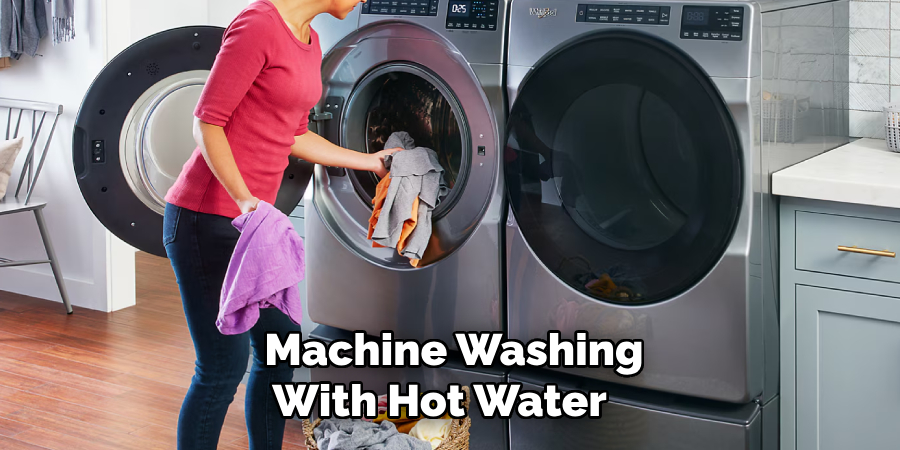
Pair this with a strong antibacterial laundry detergent or add a cup of white vinegar or a laundry sanitizer to boost germ-fighting power. Select a full wash cycle and an extra rinse if your machine allows. Once clean, ensure the mat is dried completely, either in a dryer on high heat or air-dried in direct sunlight to prevent mildew from forming.
2. Soaking in a Vinegar and Baking Soda Solution
For those who prefer natural disinfecting agents, soaking your bath mat in a combination of white vinegar and baking soda is an excellent method. Vinegar acts as a powerful antimicrobial agent, while baking soda neutralizes odors and helps lift grime. Fill a large basin or tub with warm water, then add one cup of vinegar and half a cup of baking soda. Submerge the mat fully and let it soak for at least 30 minutes. After soaking, scrub any problem areas gently with a soft brush, rinse thoroughly, and hang to dry in a well-ventilated area or under the sun.
3. Bleach Soak for White or Colorfast Mats
For white bath mats or those labeled as bleach-safe, a diluted bleach soak can thoroughly sanitize and remove mold or mildew. Mix ¾ cup of bleach with one gallon of cold water in a large tub or basin, ensuring proper ventilation. Place the mat in the solution and let it soak for no more than 10 minutes. Use gloves to handle the mat and rinse it thoroughly afterward to remove any residual bleach. Follow with a wash cycle and dry immediately. This method should be used sparingly, as frequent bleach exposure can degrade fibers over time.
4. Steam Cleaning for Chemical-Free Disinfection
Steam cleaning is an eco-friendly and highly effective option for disinfecting bath mats without using harsh chemicals. A quality handheld or upright steam cleaner produces steam at temperatures high enough to kill bacteria, viruses, and dust mites. Slowly glide the steam cleaner across the surface of the mat, making sure to cover all areas evenly.
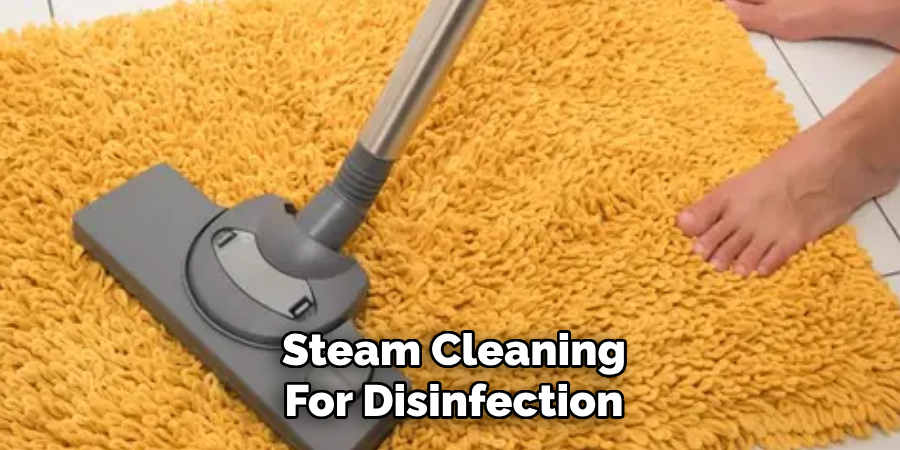
For thick or foam-filled mats, steam cleaning is especially useful, as it penetrates deeper than surface wiping. After steaming, leave the mat to dry completely to prevent new bacteria from forming in damp fibers.
5. Antibacterial Spray Between Washes
For regular upkeep between washes, using a fabric-safe antibacterial spray can help keep bath mats fresh and germ-free. Choose a disinfectant spray labeled safe for use on textiles, lightly mist the surface of the mat, and allow it to air dry. This method works particularly well in busy households or shared bathrooms where daily washing is not feasible. Sprays infused with tea tree oil or eucalyptus also offer natural antibacterial properties and leave behind a pleasant scent. Just ensure the mat is completely dry before the next use to avoid trapping moisture.
6. Hand Washing with Antibacterial Soap
Some bath mats, especially those with memory foam or rubber backing, may not be suitable for machine washing. In such cases, hand washing with warm water and antibacterial soap is an effective alternative. Fill a basin or bathtub with water and add a generous amount of antibacterial liquid soap or dish detergent. Use a soft-bristle brush or sponge to scrub the surface gently, paying extra attention to high-traffic areas. Rinse the mat thoroughly and wring out excess water carefully. Hang the mat in a breezy, dry area to ensure complete drying before reuse.
7. Drying Mats in Direct Sunlight for UV Sterilization
Sunlight has natural antibacterial and antifungal properties thanks to its ultraviolet rays. After cleaning your mat—either by washing or spraying—place it in direct sunlight for several hours. The heat and UV light help kill off any lingering bacteria and remove excess moisture, preventing mold and mildew.
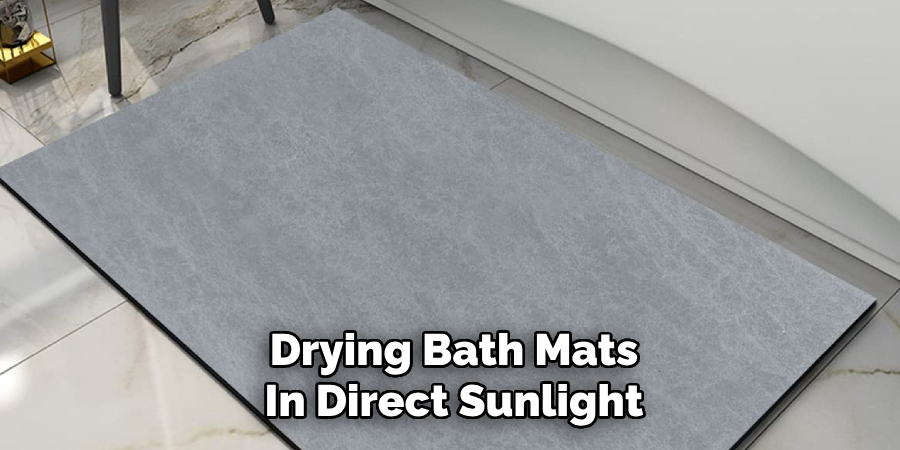
This method is particularly beneficial for larger mats that take longer to dry indoors. However, be mindful not to overexpose mats with vibrant colors, as the sun may cause fading over time.
8. Vacuum and Spot Clean with Disinfectant
If your bath mat is not washable, such as certain shaggy or decorative varieties, vacuuming and spot disinfecting can be a suitable approach. Start by vacuuming the mat thoroughly to remove dust, hair, and debris. Then, use a clean cloth dampened with a fabric-safe disinfectant or a mixture of water and rubbing alcohol to gently dab and wipe down the surface. Allow the mat to air dry fully before placing it back in the bathroom. Regular spot cleaning helps maintain hygiene without damaging delicate materials.
9. Use Laundry Additives Like Oxygen Bleach or Sanitizers
For those looking to amplify their washing machine’s disinfecting power without resorting to chlorine bleach, oxygen bleach or commercial laundry sanitizers are effective alternatives. Add the recommended amount to your washing machine during the cycle, along with your usual detergent. These additives help kill bacteria, remove tough stains, and eliminate odors, all while being gentle on most fabrics and colors. Ideal for homes with sensitive skin or allergies, they offer a balance between cleanliness and material safety.
10. Disinfect Rubber Backing Separately with Vinegar Solution
Rubber-backed bath mats require special attention, as the backing can trap water and encourage mold growth. To clean the rubber side without damaging it, prepare a solution of one part white vinegar to one part warm water. Using a sponge or cloth, wipe down the rubber backing thoroughly, focusing on any visible buildup or mildew. Rinse with clean water and lay the mat flat to dry, rubber side up. This targeted method helps prolong the life of the mat and ensures no hidden germs remain in crevices.
Things to Consider When Cleaning Bath Mats
Material Type
Different bath mats are made from various materials such as cotton, microfiber, or rubber. Always check the care label to ensure you’re using the appropriate cleaning method for the specific material.
Washing Frequency
Bath mats should be cleaned regularly, as they can quickly accumulate moisture, dirt, and bacteria. A weekly or biweekly cleaning schedule is typically recommended, depending on usage.

Drying Process
Proper drying is essential to prevent mold and mildew growth. Hang bath mats in a well-ventilated area or lay them flat to dry completely before putting them back in place.
Special Care for Rubber-Backed Mats
Avoid using harsh detergents or abrasive scrubbing tools on rubber-backed mats, as they can wear down the backing over time and reduce the mat’s functionality.
Stain Removal
Pre-treat tough stains with a mild stain remover or a combination of baking soda and water to ensure thorough cleaning during washing.
Conclusion
Bath mats serve an important purpose in our homes but can become unhygienic if neglected. With regular disinfecting using these ten detailed methods, you can keep your mats clean, odor-free, and safe for daily use. Whether you opt for natural solutions like vinegar and sunlight or prefer deep-cleaning with machines and chemical agents, consistency and proper drying are key. So, there you have it – a quick and easy guide on how to disinfect bath mats.

